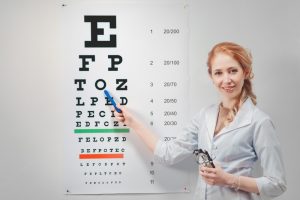 As a primary care optometrist, I recognize that some patients may only come for a single visit. A young patient may get glasses or contact lenses and then leave when they go off to college, never to return.
As a primary care optometrist, I recognize that some patients may only come for a single visit. A young patient may get glasses or contact lenses and then leave when they go off to college, never to return.
However, there are other patients who have remained in my practice for many years, and it’s my responsibility to ensure their ocular health is continuously managed, with proper diagnoses and treatment when necessary.
When I first diagnose glaucoma in a patient, it marks the beginning of an ongoing educational journey. While I discuss glaucoma regularly, for many patients, it’s the first time they’re learning about the condition. Their initial reaction is often, “Am I going blind?” In these moments, I stay calm and offer reassurance. I explain that we’ll perform more tests to understand the severity of the disease, and I tell them, “Your level of concern should match mine. If I’m worried, I’ll tell you, and we’ll address it together.” My goal is for them to feel confident that I’ll guide them through the necessary treatment, adjust their medications as needed, and help them with next steps if the condition progresses.
It’s also crucial for patients to understand the seriousness of glaucoma, a condition that often has no noticeable symptoms in the early stages. I stress the importance of adhering to treatment to prevent it from advancing. I make sure to show them their test results, comparing their intraocular pressure (IOP), visual field, and optic nerve images to those of a healthy eye and eyes with more advanced glaucoma. I remind them that although glaucoma typically progresses slowly, any changes that occur are irreversible.
For patients to fully grasp their condition, I focus on consistency in my communication. During every visit, I review their current IOP, our target IOP, and compare the results from past and current tests. We also talk about how they’re feeling, whether they’re keeping up with their eye drops, and if they’re missing any doses. I’ll often ask them to demonstrate how they’re applying the drops.
Instead of reprimanding patients for missing doses, I try to be supportive. Many patients feel guilty about not following instructions, and I don’t want that to discourage them from staying on their treatment plan. Instead, I work with them to identify any challenges they might face in managing their medication. For example, if they have difficulty squeezing the dropper because of arthritis or hand tremors, I can provide an auto-squeeze device to make it easier for them.
For patients at higher risk for more severe progression—whether due to a strong family history of glaucoma, previous eye injuries, or significant inflammation—I have that conversation early on. I let them know, “We’re going to work closely together, and I’ll be monitoring your eyes regularly.”
It’s a privilege and a responsibility to follow glaucoma patients over time. Each year, we work together to help preserve their vision. When the disease does progress, as it often does, it’s time to discuss additional treatments—such as surgery when necessary—and offer the support and compassion they need to manage the next phase of their care.


